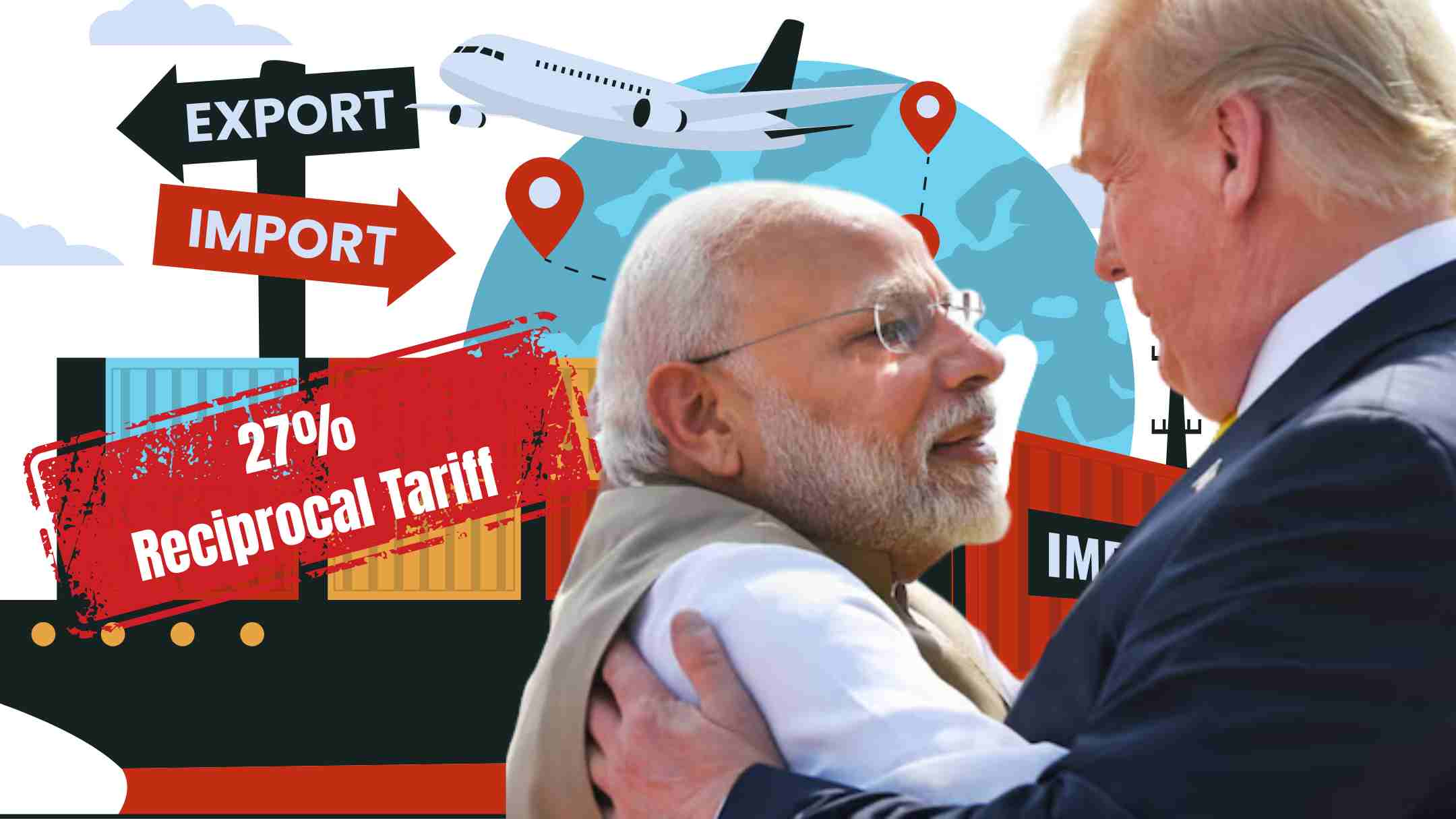Trump Slaps 27% Reciprocal Tariff on India, Calls Modi a 'Great Friend'

Trump Slaps 27% Reciprocal Tariff on India, Calls Modi a ‘Great Friend’
In a significant trade move, US President Donald Trump has announced a 27% reciprocal tariff on Indian imports, calling out India's high import duties while referring to Prime Minister Narendra Modi as a "great friend." The tariff includes a 10% universal duty on all imports, effective from April 5, with an additional 17% from April 10.
India-US Trade Tensions Escalate
Speaking at the White House, Trump emphasized that India has long imposed a 52% tariff on US goods while the US has levied "almost nothing." He reiterated his previous stance, branding India as the “tariff king” and a "big abuser" of trade ties.
Recalling his February meeting with PM Modi, Trump stated, "The Prime Minister just left. He's a great friend of mine, but I said, 'You're a friend of mine, but you're not treating us right.' They charge us 52%. We charge them almost nothing for years and years and decades."
Impact on Indian Exports
The 27% reciprocal tariff is expected to hit India's agriculture and pharmaceutical exports significantly. Steel and aluminum sectors are already reeling under the 25% tariffs imposed earlier by Trump. Additionally, a 25% duty on auto imports and parts will come into force from April 3, affecting the automobile industry.
India-US Bilateral Trade in Focus
Between 2021-22 and 2023-24, the US remained India's largest trading partner, accounting for 18% of India's total goods exports. A recent SBI Research report projected a 3-3.5% decline in Indian exports due to US-imposed tariffs.
Despite these trade frictions, India and the US have made progress on the Bilateral Trade Agreement (BTA). Sources indicate that the Modi government is considering lowering import duties on Harley-Davidson bikes, bourbon whisky, and Californian wine to ease trade tensions. The Indian Budget for this year has already proposed reducing import duties on Harley-Davidson bikes from 50% to 40%.
What's Next?
With reciprocal tariffs now in play, trade relations between India and the US are at a critical juncture. While both nations continue to negotiate on the BTA, businesses and exporters on both sides are closely watching how this policy shift will unfold in the coming months.

